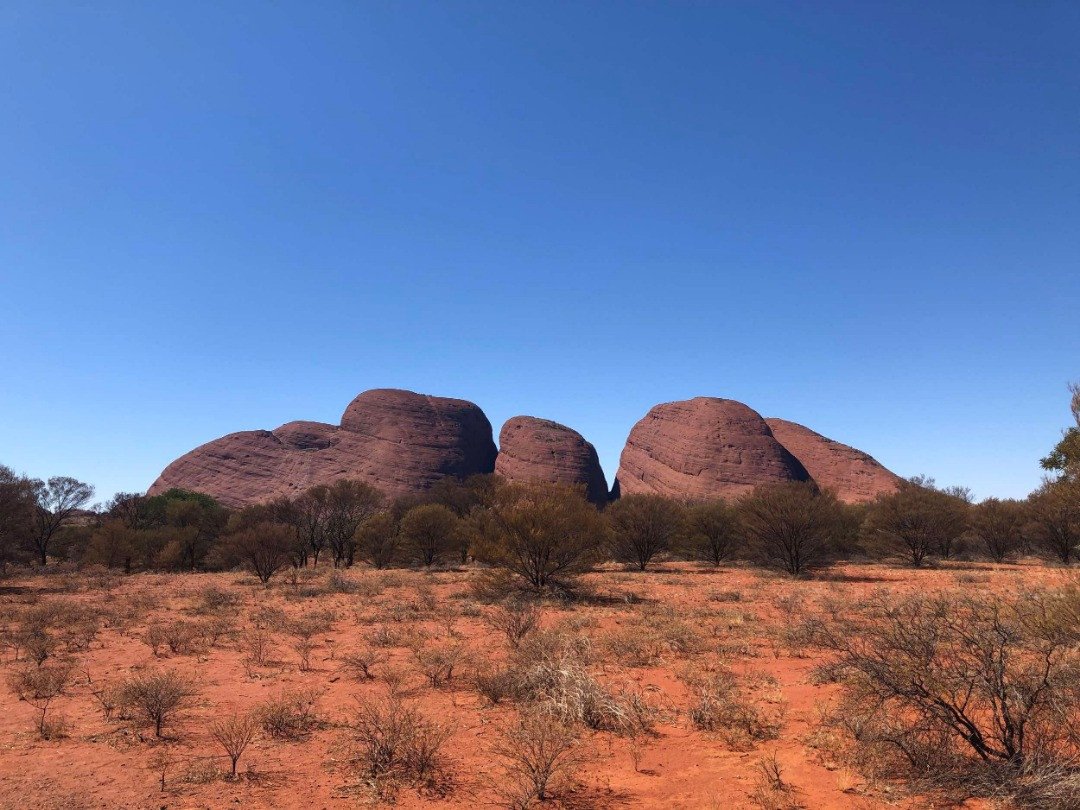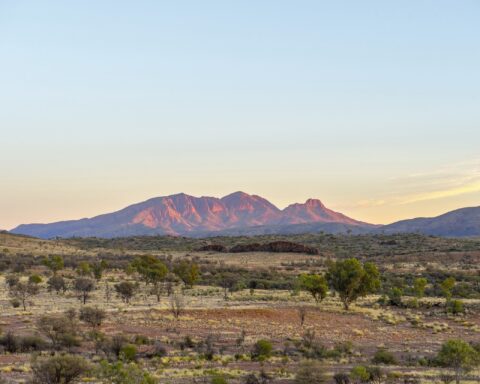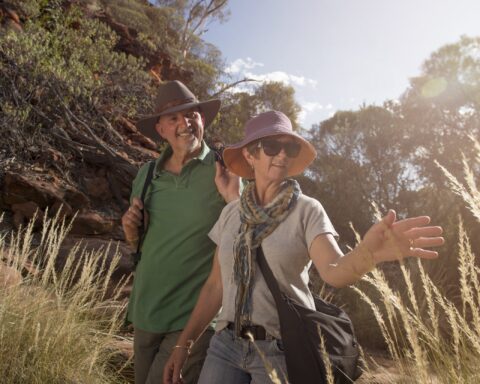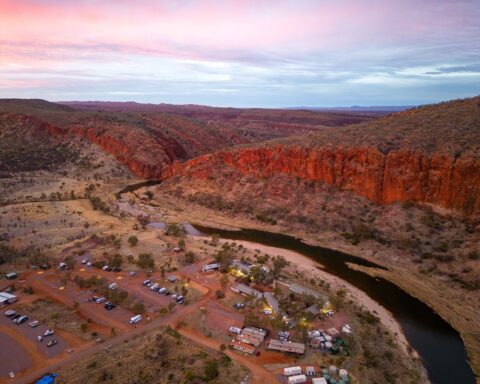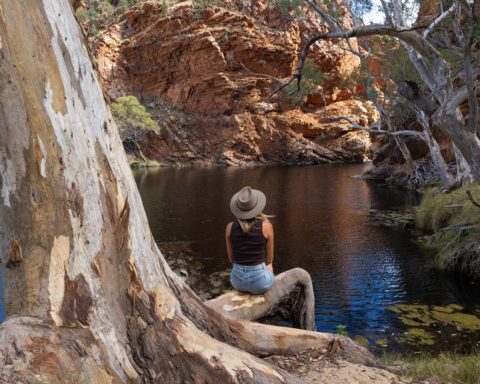While Uluru, or The Rock, is definitely one of Australia’s most well known rock formations, many visitors to Central Australia find the nearby Kata Tjuta, or The Olgas, are just as mesmerising. As the bumps of the 36 domes rise up from the surrounding plain, it’s easy to see why the Pitjantjatjara/Yankunytjatjara name for the landmark means ‘many heads’.
Just like its more famous neighbour, Kata Tjuta is especially magnificent at sunrise and sunset when the formations are painted by the light. For those iconic panoramic views of Kata Tjuta, head to the dune viewing area at sunrise. Just be warned that it’s likely to be very busy at that time! It’s often not as crowded at sunset though, so you may like to hang out for the end of the day instead. Another quieter place to watch the sunset is from the benches on the track to Walpa Gorge.

If you don’t mind the crowds though, then find yourself a spot at the aptly named sunset viewing area. As the name suggests, this location provides the perfect location for watching the sun turn the domes from pink to red as it sets. Just remember to keep an eye on the time because the entire national park is day-use only, so closing times apply.
A wander up Walpa Gorge is a must-do to get up close to the sheer walls of this amazing feature. Being the shorter, and easier of the area’s two walks, this one is quite popular so try to slow down and experience it at your own pace. You’ll need to allow at least one hour for the walk, which is rocky and requires good footwear. As you head up the gorge, rest a while on the benches to soak up the atmosphere of this culturally sensitive area. At the far end of the walk, where the walls come closer together, you may even see some wallabies or wildflowers. The walk is often quieter at the end of the day when most visitors have flocked to one of the more popular sunset-viewing areas.

If you want to really get amongst these amazing domes, then tackle the Valley of the Winds walk. To complete the entire circuit takes three to four hours and the going is steep, rocky and difficult in places. The fact that the walk is closed after Karu Lookout once temperatures reach 36°C lets you know just how tough this one is considered. If you’d rather skip the more difficult section, it is possible to just walk to Karu Lookout for the amazing views, and then retrace your steps.
Kata Tjuta is part of the World Heritage–listed Uluru-Kata Tjuta National Park, which is jointly managed by Anangu and Parks Australia. Park entry fees apply, and permits can be purchased online. There is no camping permitted in the park, with the nearest available at Yulara. It’s only about 50km on sealed roads to Yulara, which has plenty of accommodation and restaurants as well as an airport.

